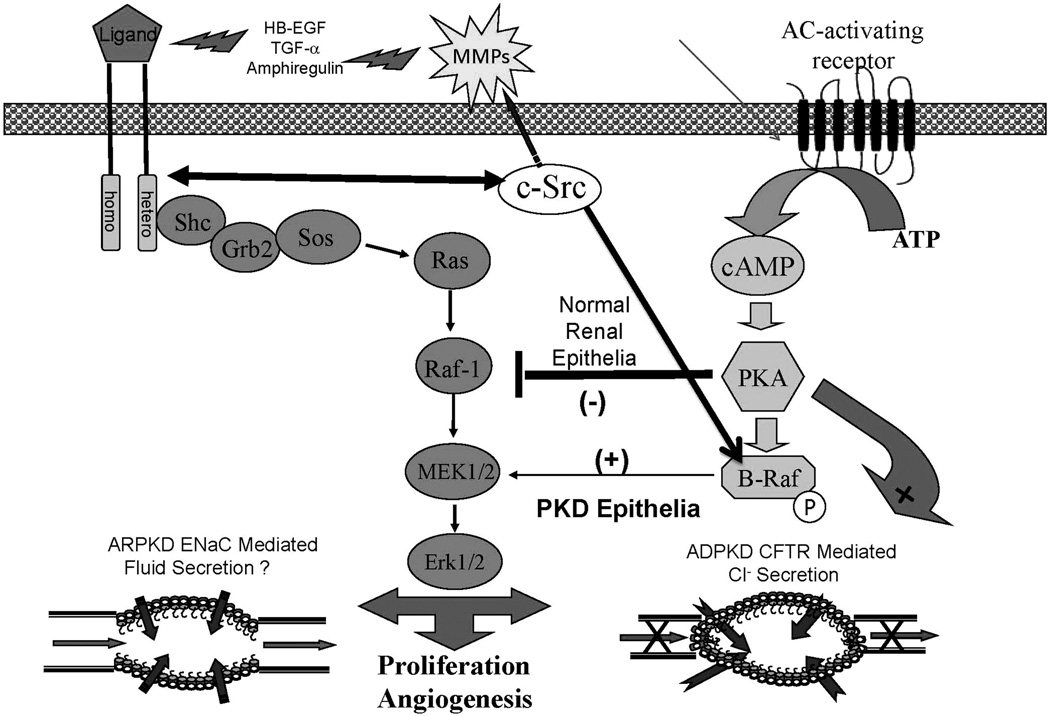Figure 3.
This represents our recent approach to the discovery and testing of potential therapeutic interventions. Our rationale is that by using a compound that inhibits both pathways, a smaller dose will be necessary to achieve maximum cyst reduction and any toxicity associated with the therapy will be minimized. cSrc provides such a target because it inhibits both the activity of the EGFR-axis and the G-protein (cAMP) pathway which are both aberrantly active in ADPKD and ARPKD. Active cSrc can: reciprocally phosphorylate EGFR, and increase availability of EGFR-axis ligands by activating matrix metalloproteinases (MMPs) necessary for ligand processing and; in the cAMP mediated pathway, cSrc is necessary for phosphorylation of β-Raf and subsequent activation of MAPK leading to increase proliferation. This diagram demonstrates the rationale for the therapeutic strategy we are pursuing, the use of therapeutic compounds that interfere with multiple pathways.

